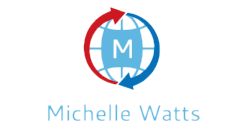Marketing agencies need SOPs. It’s an established truth. But your agency isn’t required to spend the time to create documents that gather dust in the digital world. If you have SOPs covering every aspect of your company, your recruitment process is smooth. But, sooner or later, you’ll notice that your contractors and employees still need to open the SOPs. They’ve found a way to accomplish the job, and it’s more efficient.
Your time on these SOPs is wasted and could have been utilized more efficiently. In this Traffic and Conversion Summit session, Ryan Deiss talked about the importance of writing SOPs but not making SOPs.
This is the key to practical SOPs that your employees follow.
We’ll explain…
How to Create Functional SOPs
The functional SOPs constitute the brains of your company. We’re not saying you shouldn’t have SOPs. Absolutely. SOPs are standard operating procedures (SOPs) that assist you in hiring and transferring employees to new posts and identify the areas where you’re not efficient. Particularly when you’re an agency’s owner, SOPs are your most trusted all-rounder.
If you’re looking to expand your agency from five clients to 10, and eventually 20-plus, SOPs are the right method to go about it. But only if you utilize them in the correct method. If you’re spending excessive time on SOPs that employees don’t need they don’t need, you’ve wasted time that could have been better spent on leads or delivering the goods.
Here are three steps for creating effective SOPs that employees can access, share, and use.
Select the most crucial tasks you’ll need SOPs to accomplish.
The first step in establishing practical SOPs is to determine the required tasks. Developing an SOP for every aspect of your business is tempting since it’s efficient. However, it’s an unnecessary effort if your team doesn’t follow SOPs. As Ryan mentioned during the Traffic and Conversion Summit talk, you require SOPs to perform the most critical tasks.
All other things will gather digital dust on your employees’ desktops and never be used again. What is the most important job? It could include organizing your team’s meetings, uploading your content to WordPress, or even making notes for podcasts. The most crucial tasks of your business are those that move up the scale and remain on your list of things to do.
Tasks that are outsourced by VAs (like recording show notes for podcasts)
Templates for meetings (Gino Wickman provides templates for meetings via Traction)
Tech-related instructions (like posting blog posts to WordPress)
Here’s a portion of an old SOP that we used to create in the podcast’s podcast show notes.
This was a crucial SOP to us as one) we upload each week a new podcast (recurring task), 2.) We wanted to provide an experience consistent with our listeners (to increase the speed of the growth of our audience).
Once you’ve identified the jobs that bring about change and form a regular component of your company, then it’s time to draft your SOPs.
Record each step, along with a description
Each job that positively affects forward in the right direction and is completed consistently is deemed a good candidate for an SOP. In step 2, don’t think about anything except recording every step of the process or task in the most precise manner feasible. The goal is to give this document to someone on the street and be able to accomplish that task or complete the procedure.
Yes, your SOP should indeed be as specific.
When we create SOPs, they are divided into sections. This allows those performing the job or running the process to determine the required information before beginning and moving toward the next phase.
For instance, here’s the Table of Contents of the Blog Posts Uploading SOP
Working with the Blog Document
Section 1: Get Finalized Post
Section 2: Prep Post for Layout
Section 3: Process Images
Section 4 Uploading Copy of a Post Copy in WordPress
Section 5: Complete SEO and Sidebar information
Section 6: Publish Post
Each section contains an extensive description of the operating procedure. Here’s what the first two parts of our Blog posting SOP will look like:
At this point, you’re simply recording everything involved in the project. The next step will be to give your SOP an extra polish.
Eliminate the most words is possible
Every SOP must be kept as brief as you can. If you make the process longer than it is, then the more difficult the task or procedure. Complex procedures and tasks are the exact opposite of growth for an organization. Your employees shouldn’t be working on one job for the entire day since they need to read 30+ pages to complete the SOP.
It sounds unreal.
In the third step, You have one objective remove as many words as you can from your SOP. Shorten your sentences. Tighten up your explanations. Make use of more pictures. Help make your SOP a one-stop experience, not a class.
The SOP we send our certified partner weekly email runs two pages long. It doesn’t have to be anymore so that our team of emailers can have it written and delivered to the recipient. The SOP is divided into two sections:
Procedure
Email Outline
At the beginning of this document, you will find a plan for generating, writing, reviewing, and submitting every week’s email. Below is the outline of emails to follow.
Can this SOP be more than ten pages long? Absolutely. It could take longer if we included every detail that could be included in the email and then uploaded it to our email service provider. But we don’t have to know every single detail to be done correctly. Our team needs to know the timeline (so the email is written! ) and who’s responsible for which part of the procedure, as well as the outline.




















Comments